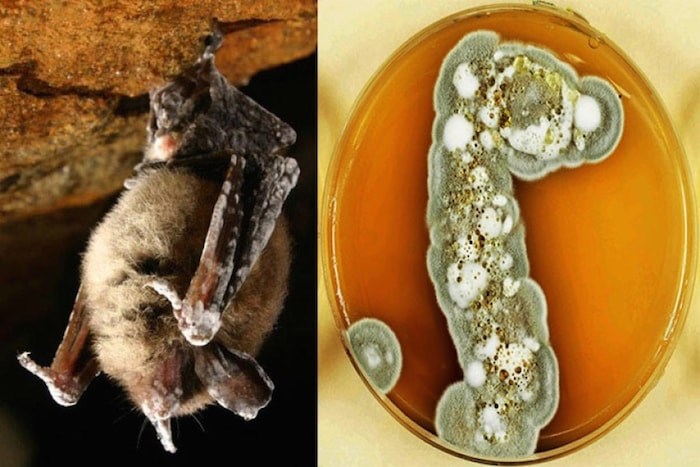Only 150 kilometres south of the B.C.-U.S. border, White Nose Syndrome (WNS) has been confirmed.
In eastern North America, the fungal disease has killed millions of bats. WNS has an almost 100 per cent mortality rate for some bat species, and the is concerned how the appearance of WNS on the west coast could decimate B.C. bat populations.
 Bat with White Nose Syndrome. Photo courtesy Community Bat Programs of BC
Bat with White Nose Syndrome. Photo courtesy Community Bat Programs of BC
The disease affects hibernating bats and is named for the white fungus that appears on the muzzle and other body parts.
The pathogen, which first turned up in North America in 2006 and reportedly by 2012 was associated with at least five to seven million bat deaths, impacts bats’ metabolism.
B.C. is home to the most diverse bat population in the country, with 16 out of 19 species that call Canada home. Half of these bats are considered to be of conservation concern, including two that were listed in 2017 as endangered in Canada due to WNS.
Researchers believe bats hibernate in various communities across the province, and are asking people to watch for odd behaviour.
“We are encouraging the public to report any winter bat roosts, dead bats or any sightings of winter bat activity to the Community Bat Project. Bat carcasses will be submitted for testing for White Nose Syndrome and would provide the earliest indication of the presence of the disease in B.C.,” Mandy Kellner of BC Community Bat Program said in a press release.
Related:
- The largest bat colony in B.C. lives inside this historic Metro �鶹��ýӳ��house
- A nasty fungus is wiping out millions of bats
Symptoms to watch for in bats including flying in the winter (when they should be hibernating), and seeing dead bats outside before May 31. The Community Bat Programs asks people to contact them as soon as they find a bat, pick it up with gloves, wrap it in paper towel, and place it in a Ziploc bag to freeze it until it can be sent for testing. The program warns to never touch a bat with bare hands.
“We believe that our bats hibernate in relatively small groups across the province,” Kellner said. “Detecting WNS in our province will require many eyes on the ground.”
While WNS cannot be transmitted to humans, the collection of data on B.C. bat activity can help track and monitor the fungal disease.
With files from the Delta Optimist


